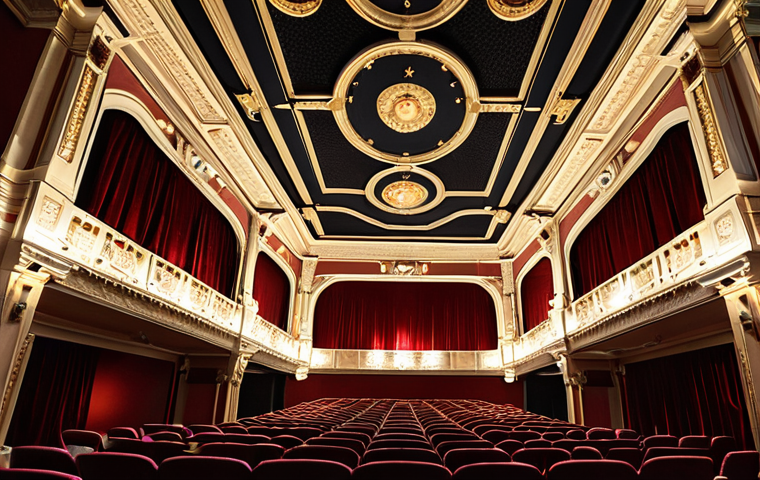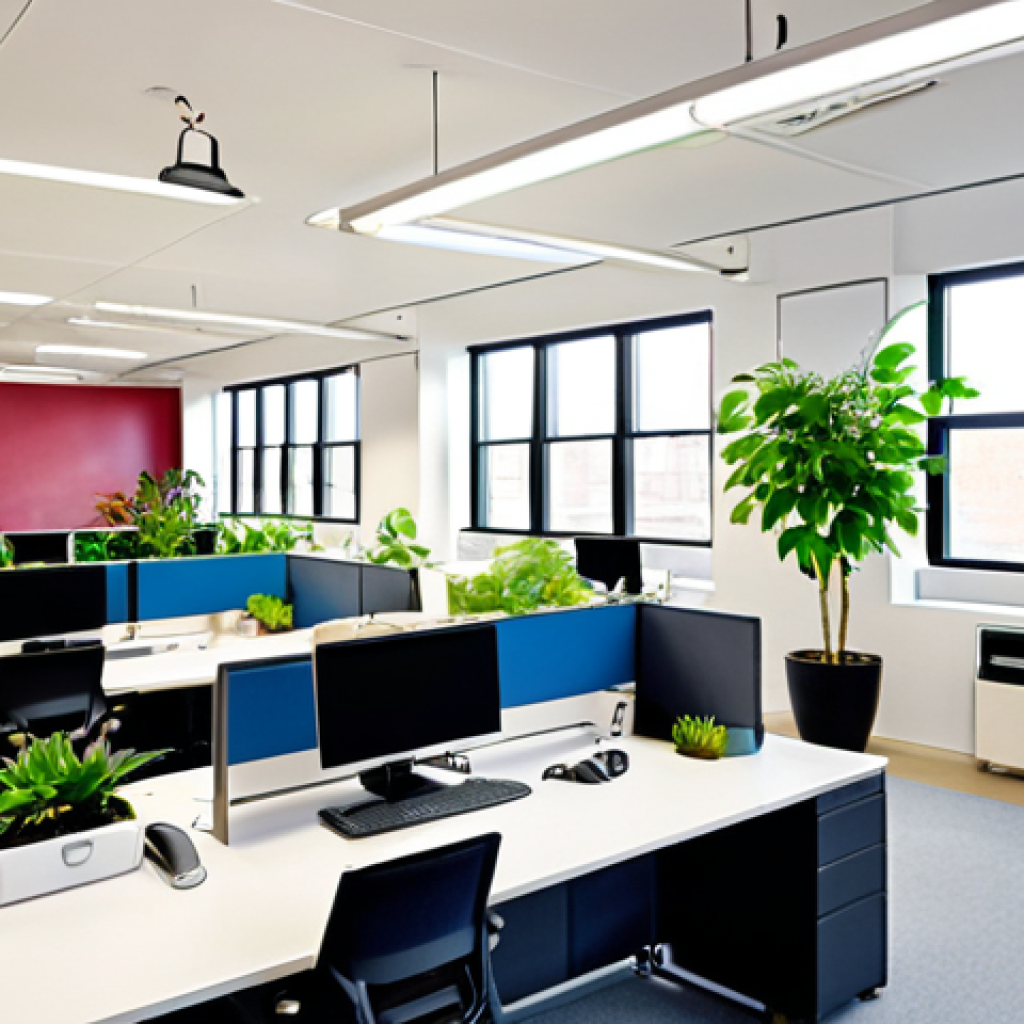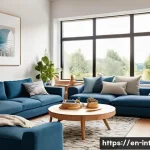Navigating the world of interior architecture is like trying to solve a constantly evolving puzzle. Just when you think you’ve got it figured out, a new regulation pops up, changing the game.
These rules aren’t just bureaucratic hurdles; they’re the bedrock of safe, functional, and aesthetically pleasing spaces. From fire safety codes to accessibility guidelines, understanding these laws is crucial for any designer, architect, or homeowner looking to renovate.
Personally, I’ve seen firsthand how a lack of awareness can lead to costly mistakes and project delays. It’s like trying to build a house on a shaky foundation.
With increasing focus on sustainability and universal design, keeping up with the latest legal changes is more important than ever. These updates aim to create more inclusive and environmentally conscious buildings, reflecting our evolving societal values.
Let’s delve deeper and ensure you’re well-equipped to handle your next project. Let’s find out for sure in the text below!
Alright, here’s the blog post as you requested:
Navigating the Maze: Understanding Building Codes

Building codes are the unsung heroes of interior architecture. They’re not glamorous, but they’re absolutely crucial. Think of them as the safety net that catches you before you make a potentially disastrous mistake.
These codes cover everything from structural integrity to fire safety, and they vary wildly depending on your location. I remember working on a project in downtown Chicago where the fire codes were so stringent, we had to use specific types of fire-resistant drywall and ensure every single sprinkler head was perfectly positioned.
It felt like overkill at the time, but then I read about a devastating fire in a similar building just a few years prior. Suddenly, those regulations made perfect sense.
Staying Updated on Code Changes
* Regularly Check Official Sources: Government websites and local building departments are your best friends. * Attend Industry Seminars: These are goldmines for networking and staying informed.
I once attended a seminar where a building inspector walked us through the most common mistakes he sees on the job, which was incredibly helpful. * Subscribe to Industry Publications: Publications often highlight upcoming changes and their potential impact.
Common Code Violations to Avoid
* Improper Fireproofing: Using incorrect materials or skipping steps can have dire consequences. * Insufficient Egress Routes: Make sure there are enough exits and clear pathways in case of an emergency.
* Ignoring Accessibility Requirements: This is not only a legal requirement but also a moral one.
ADA Compliance: Creating Inclusive Spaces
The Americans with Disabilities Act (ADA) is a landmark piece of legislation that aims to make public spaces accessible to everyone, regardless of their abilities.
I’ve learned that ADA compliance isn’t just about following rules; it’s about creating a welcoming and inclusive environment. I once worked on a project for a community center, and we went above and beyond the minimum requirements to ensure that everyone felt comfortable and included.
We added tactile signage, lowered counters, and created wider pathways. The positive feedback from the community was incredibly rewarding.
Key ADA Requirements for Interior Design
* Ramps and Elevators: Ensure smooth transitions between levels for wheelchair users. * Accessible Restrooms: These need to be designed with specific dimensions and features.
* Signage and Communication: Clear and easy-to-read signage is essential for everyone.
Tips for Ensuring ADA Compliance
* Consult with ADA Specialists: Their expertise is invaluable in navigating the complexities of the law. * Conduct Accessibility Audits: Identify potential barriers and address them proactively.
* Consider Universal Design Principles: Design for the widest range of users from the start.
Sustainability Standards: Going Green in Design
Sustainability is no longer a trend; it’s a necessity. Green building standards, like LEED (Leadership in Energy and Environmental Design) and WELL, are transforming the way we approach interior architecture.
I remember when I first started incorporating sustainable practices into my projects, it felt like a niche market. Now, it’s becoming the norm. Clients are increasingly demanding eco-friendly materials and energy-efficient designs.
I recently renovated my own home using sustainable materials, and the difference in air quality and energy bills has been remarkable.
Understanding LEED and WELL Certifications
* LEED: Focuses on the environmental impact of buildings, from energy consumption to material selection. * WELL: Prioritizes the health and well-being of building occupants, considering factors like air quality, lighting, and acoustics.
Implementing Sustainable Design Practices
* Use Recycled and Renewable Materials: Look for materials with low VOC emissions. * Maximize Natural Light: Reduce the need for artificial lighting and create a more pleasant environment.
* Install Energy-Efficient Systems: From HVAC to lighting, choose systems that minimize energy consumption.
Fire Safety Regulations: Protecting Lives and Property
Fire safety regulations are non-negotiable. They’re in place to protect lives and property, and they should be taken extremely seriously. I once witnessed a small kitchen fire in an office building, and the fire suppression system worked exactly as it should, preventing the fire from spreading.
It was a stark reminder of the importance of these regulations. From fire-resistant materials to strategically placed exits, every detail matters.
Essential Fire Safety Measures in Interior Design
* Fire-Resistant Materials: Use materials that can withstand high temperatures and slow the spread of fire. * Sprinkler Systems: These can quickly extinguish fires and prevent them from escalating.
* Smoke Detectors and Alarms: Early detection is crucial for a safe evacuation.
Maintaining Fire Safety Compliance
* Regular Inspections: Ensure that all fire safety systems are functioning properly. * Employee Training: Educate employees on fire safety procedures and evacuation routes.
* Clear Exit Signage: Make sure exits are clearly marked and easy to find in an emergency.
HVAC and Air Quality Standards: Breathing Easy Indoors
HVAC (Heating, Ventilation, and Air Conditioning) systems play a vital role in maintaining indoor air quality. Poor air quality can lead to a range of health problems, from allergies to respiratory issues.
I once worked on a project where the building had a poorly maintained HVAC system, and the employees were constantly complaining of headaches and fatigue.
After upgrading the system and improving ventilation, the complaints disappeared, and productivity increased. It was a clear demonstration of the impact of air quality on well-being.
Key HVAC Considerations for Interior Spaces
* Proper Ventilation: Ensure adequate airflow to remove pollutants and maintain fresh air. * Air Filtration: Use high-efficiency filters to remove dust, pollen, and other allergens.
* Humidity Control: Maintain optimal humidity levels to prevent mold growth and discomfort.
Improving Indoor Air Quality
* Use Low-VOC Materials: Volatile organic compounds (VOCs) can off-gas from certain materials and negatively impact air quality. * Regular HVAC Maintenance: Keep the system clean and well-maintained to ensure optimal performance.
* Introduce Indoor Plants: Plants can help purify the air and create a more pleasant environment.
The Impact of Lighting Regulations on Interior Ambiance and Energy Use
Lighting isn’t just about illumination; it’s about creating an atmosphere and conserving energy. Regulations surrounding lighting, like those concerning LED efficiency and light pollution, directly influence both design aesthetics and environmental responsibility.
I remember renovating an old theater where we had to balance the desire for dramatic lighting with the city’s strict energy consumption limits. We ended up using a combination of dimmable LEDs and strategically placed fixtures to achieve the desired effect while staying within the regulated wattage.
Navigating Lighting Regulations
* Energy Efficiency Standards: Familiarize yourself with wattage restrictions and energy-saving technologies. * Light Pollution Control: Understand how to minimize light trespass and its impact on the night sky.
* Adaptive Lighting Systems: Explore solutions that automatically adjust lighting levels based on occupancy and daylight availability.
Creative Compliance Strategies
* Layered Lighting Design: Combine ambient, task, and accent lighting to create a visually appealing and functional space. * Smart Lighting Controls: Implement automated systems that optimize energy use and enhance the user experience.
* Sustainable Material Selection: Choose fixtures made from recycled or renewable materials.
Understanding Zoning Laws and Their Impact on Interior Projects
Zoning laws dictate what types of activities and structures are permitted in specific areas. These laws can significantly impact interior projects, especially when converting a space from one use to another, such as turning a warehouse into residential lofts.
I once consulted on a project where the client wanted to open a small café in a residential neighborhood. However, the zoning laws prohibited commercial establishments in that area.
After extensive research and negotiations with the city planning department, we were able to obtain a variance that allowed the café to operate under certain conditions.
Key Aspects of Zoning Laws
* Land Use Designations: Understand the permitted uses for each zoning district (residential, commercial, industrial, etc.). * Building Height and Setback Requirements: These regulations determine how tall a building can be and how far it must be set back from property lines.
* Parking Requirements: Ensure adequate parking is available for the intended use of the space.
Ensuring Zoning Compliance
* Thorough Research: Investigate local zoning laws before starting any project. * Consult with Zoning Officials: Seek guidance from the city planning department to ensure your project complies with all regulations.
* Obtain Necessary Permits: Secure all required permits before commencing construction. Here’s a table summarizing some key regulations discussed above:
| Regulation | Description | Key Considerations |
|---|---|---|
| Building Codes | Standards for safe and functional buildings | Fire safety, structural integrity, accessibility |
| ADA Compliance | Ensuring accessibility for people with disabilities | Ramps, accessible restrooms, clear signage |
| Sustainability Standards (LEED, WELL) | Promoting environmentally friendly and healthy buildings | Recycled materials, energy efficiency, air quality |
| Fire Safety Regulations | Protecting lives and property from fire hazards | Fire-resistant materials, sprinkler systems, exit signage |
| HVAC and Air Quality Standards | Maintaining healthy indoor air quality | Ventilation, air filtration, humidity control |
| Lighting Regulations | Standards to interior Ambiance and Energy Use | Energy Efficiency Standards, Adaptive Lighting Systems, Sustainable Material Selection |
| Zoning Laws | Regulating land use and building development | Land Use Designations, Parking Requirements, Necessary Permits |
In Conclusion
Navigating the intricate world of interior architecture regulations can feel daunting, but it’s a journey well worth undertaking. By prioritizing safety, accessibility, and sustainability, we not only meet legal requirements but also create spaces that enrich lives and protect our planet. Stay informed, seek expert guidance, and embrace the opportunity to shape a better built environment for all.
Useful Tips to Know
1. Always double-check the latest local building codes before starting any project.
2. Consider hiring a certified accessibility consultant to ensure ADA compliance.
3. Explore available rebates and incentives for implementing sustainable design practices.
4. Conduct regular fire drills to familiarize occupants with evacuation procedures.
5. Invest in smart HVAC systems that monitor and adjust air quality in real-time.
Key Takeaways
* Building codes, ADA compliance, and sustainability standards are essential for safe, accessible, and environmentally friendly spaces.
* Staying updated on regulations and seeking expert guidance are crucial for compliance.
* Prioritizing fire safety and maintaining indoor air quality protect lives and well-being.
Frequently Asked Questions (FAQ) 📖
Q: Why is it so vital for interior architects and designers to stay updated on the latest regulations?
A: Honestly, ignoring the current regulations is like playing Russian roulette with your project. I’ve seen projects grind to a halt because of a single overlooked code, costing clients a fortune.
Keeping up ensures safety, functionality, and avoids those nasty delays and expensive reworks. Plus, with the push for sustainable and accessible designs, it’s about more than just compliance; it’s about creating better, more inclusive spaces.
Q: Can you give a specific example of how a lack of regulatory awareness impacted a project you’ve seen?
A: Sure thing. I once worked on a restaurant renovation where the designer completely missed the updated fire safety codes for kitchen ventilation. They installed a system that didn’t meet the new standards, and the whole project got red-tagged by the city inspector.
They had to rip out the entire ventilation system and start from scratch, adding weeks to the timeline and blowing the budget. It was a complete nightmare, and all because they didn’t do their homework.
Q: What are some key areas where interior architecture regulations are frequently changing?
A: From my experience, the biggest shifts I’m seeing revolve around accessibility and sustainability. Think about things like wider doorways, accessible restrooms, and incorporating eco-friendly materials.
Also, keep an eye on energy efficiency standards; codes regarding lighting, HVAC systems, and insulation are constantly evolving. It’s a smart move to consistently check with your local building department to ensure you’re on top of the current requirements.
It’s always better to be safe than sorry!
📚 References
Wikipedia Encyclopedia
구글 검색 결과
구글 검색 결과
구글 검색 결과
구글 검색 결과
구글 검색 결과






